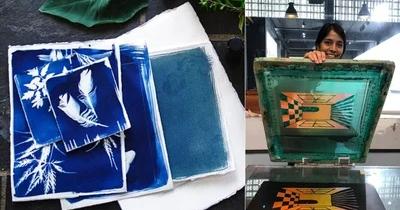Memorial artworks have long served as powerful symbols of remembrance and reflection, allowing us to honor the past and pay tribute to significant events and individuals. These creative expressions commemorate historical moments and provide a means for us to connect with our collective memory and identity. In this article, we will delve into the world of memorial artworks, examining their historical significance, the creative process behind their creation, notable case studies, their impact on society, and the future of this art form.
Understanding Memorial Artworks
The Historical Significance of Memorial Art
Memorial artworks have been crucial in preserving history and shaping our understanding of past events. These powerful creations serve as visual records, capturing the impact of significant moments in time and ensuring that future generations know their significance. Through their form and message, memorial artworks evoke a sense of reflection and contemplation, reminding us of the triumphs, tragedies, and sacrifices that have shaped our world.
Different Forms of Memorial Artworks
Memorial artworks come in various forms, each with its unique way of conveying meaning and emotion. From statues and sculptures to murals and installations, these artworks engage our senses and transport us to the heart of historical moments. Whether it’s a monumental structure or an intricate piece of artwork, these creations serve as tangible reminders of our shared history, allowing us to connect with the past profoundly and personally.
On the other hand, murals offer a different approach to memorial art. These large-scale paintings can be found on walls and buildings, capturing the essence of a historical event or paying tribute to individuals who made a significant impact.
With their immersive and interactive nature, installations provide a unique way of experiencing memorial art. One notable installation is the “Field of Empty Chairs” in Oklahoma City. Created in remembrance of the 168 people who lost their lives in the 1995 bombing of the Alfred P. Murrah Federal Building, this installation consists of 168 empty chairs, each representing a life lost. Visitors can walk among the chairs, reflecting on the tragedy and honoring the memory of those who perished.
At the heart of this spectrum, a loved one painting is a testament to the timeless allure of brush and canvas. Unlike other mediums, painting offers unparalleled depth and intimacy, allowing for the layering of memories, emotions, and nuances that make our loved ones unique.
The Creative Process Behind Memorial Artworks
Conceptualization: The Birth of an Idea
Before a memorial artwork can take shape, it starts with a powerful idea. Artists draw inspiration from historical events, personal experiences, and the stories of those affected. This initial conceptualization stage involves extensive research and reflection as artists seek to create a design that captures the essence of the event or individual being commemorated.
Design and Planning: Bringing Ideas to Life
Once the conceptualization phase is complete, artists move on to the design and planning stage. This involves translating their vision into a tangible form, considering size, materials, and location. Collaboration with architects, engineers, and other experts is often necessary to ensure the feasibility and longevity of the artwork.
Execution: The Artistic Journey
With the design finalized, the artist embarks on the execution phase, transforming their ideas into a physical reality. This stage requires immense skill and craftsmanship as artists work with various materials and techniques to bring their vision to life. Each brushstroke, chisel mark, or weld contributes to the artwork’s overall impact and emotional resonance.
The Impact of Memorial Artworks on Society
Fostering Collective Memory and Identity
Memorial artworks contribute significantly to the preservation of collective memory and the forging of societal identity. These artworks become integral parts of our shared cultural narrative by commemorating pivotal moments in our history. They are visual reminders of our values, accomplishments, and tragedies, fostering a sense of unity and continuity across generations.
Healing and Closure: The Therapeutic Role of Memorial Art
Memorial artworks also play a crucial role in healing and closure, providing spaces for individuals and communities to grieve and find solace. These artworks offer a tangible way to process emotions, catalyzing personal reflection and collective healing. By providing a physical outlet for grief and remembrance, they facilitate the healing process and contribute to the well-being of society as a whole.
The Future of Memorial Artworks
Technological Innovations and Their Influence
The future holds endless possibilities for the evolution of memorial artworks. With technological advancements, artists can incorporate interactive elements, augmented reality, and multimedia installations. These innovations can enhance the immersive qualities of commemorative artworks, creating even more engaging and transformative experiences for visitors.
Evolving Trends in Memorial Art
As society changes and our understanding of history expands, so will the trends in memorial art. Artists are increasingly moving away from traditional representations and exploring new forms and aesthetics. This experimentation allows for a more dynamic and inclusive approach to memorialization, ensuring that diverse experiences and perspectives are represented in these creative expressions.
Final Words
As we reimagine memories through memorial artworks, we deepen our connection to the past and construct a more empathetic society. These creative expressions serve as windows into our shared history, providing opportunities for reflection, healing, and remembrance. By exploring the creative process behind memorial artworks, we can better appreciate the immense effort and thoughtfulness that goes into their creation and understand their impact on society today and in the future.
